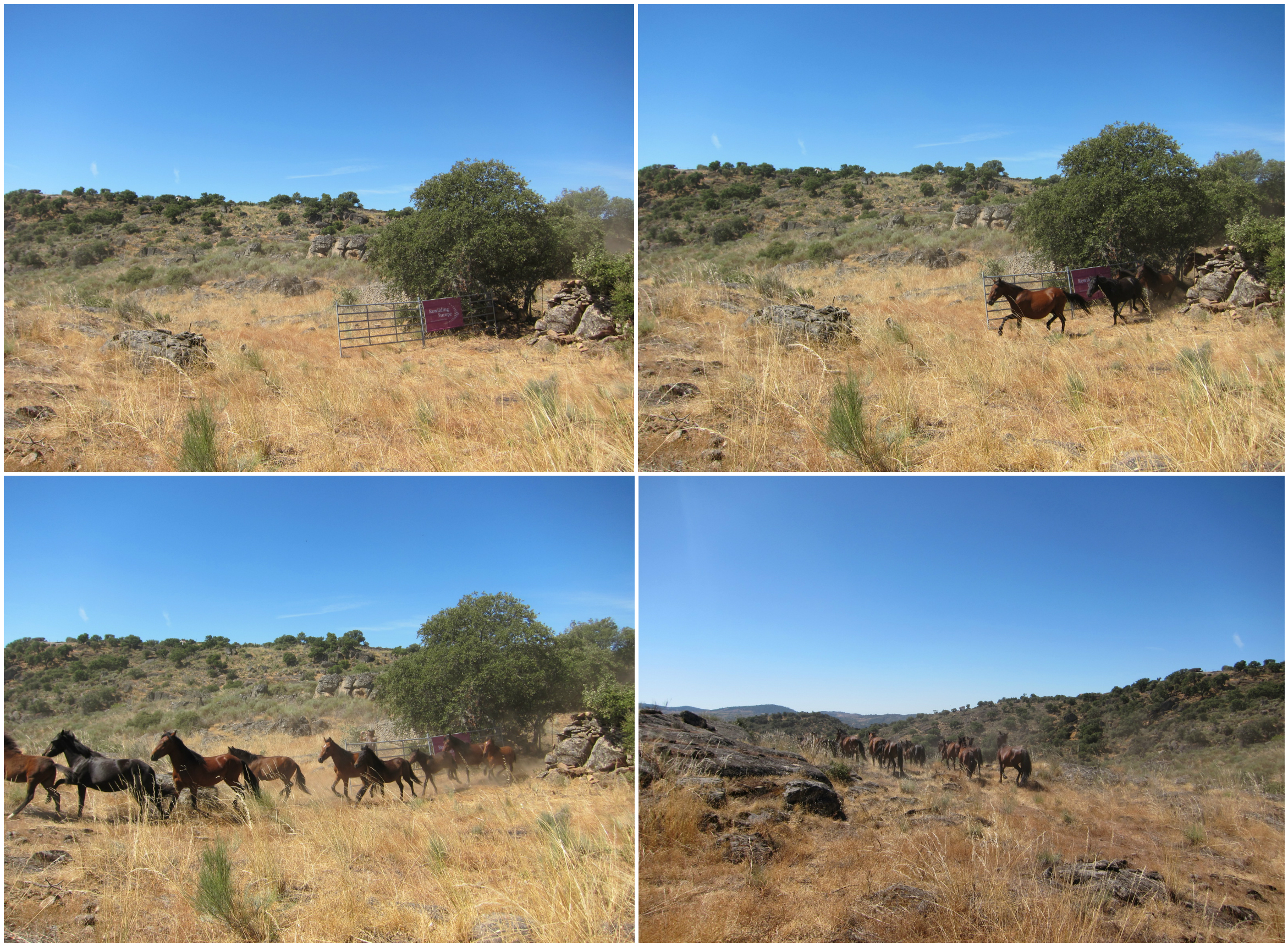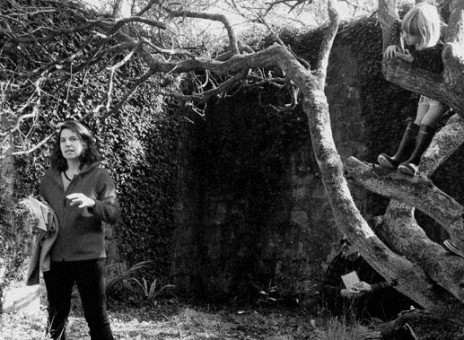Libertação de Cavalos

‘Libertação de Cavalos’, read the poster in the tourist centre and hostel office in the tiny village of Cidadelhe. The village perches on a plateau between two deep river valleys—the Coâ and the Massueime—in the far north east corner of Portugal. The ‘liberation of the horses’, which took place on a hot Saturday in August, was the latest development in a sixteen-year project to restore biodiversity and ecosystem function to the rugged landscape in the wake of widespread agricultural abandonment and depopulation. (Most of the houses in Cidadelhe are unoccupied, many of them in ruins.) Since 2012, Heritage Futures project partner Associação Transumância e Natureza (ATN) has been working with Netherlands-based Rewilding Europe to run a rewilding pilot in ATN’s Faia Brava reserve along the Coâ .
The horse release on August 20 inaugurated a new part of the reserve—300 hectares of steep ground, studded with granite boulders and outcrops, stretching from the outskirts of Cidadelhe down to the western banks of the Coâ. The day began early, with an 8:30 gathering for a hiking and birdwatching expedition. Roughly thirty people turned up for the walk—elderly village residents, with walking sticks and wide-brimmed hats; teenagers whose parents have holiday homes in the village; ATN biologists and field crew members; the proprietors of the village hostel, who have been fixing up ruined buildings as tourist accommodation; a few travellers and onlookers (like myself and my family) who were curious to learn more about the area; and a film crew, accompanying Rewilding Europe managing director Fran Schepers to gather footage for a documentary on the organisation. It was a broad and eclectic cross-section of humanity, a convergence of the different communities of interest with a stake in the area.
The walk ended at a corral where the horses had been penned in preparation for the release. There was a ceremonial ribbon cutting, and then the crowd assembled above the narrow gate where horses would emerge. It was a symbolic moment, but also a slightly perplexing one. The wild horses were liberated into a fenced territory, where they will be monitored and managed as they gradually become able to fend for themselves, and eventually (hopefully) recreate the natural grazing regime that would have existed in this valley before agriculture introduced olive trees and arable fields, cork cultivation and seasonal burning. ATN has a long term vision mind, and is well aware of the short term practicalities that are required to get them there.
In some ways, the most promising part of the day was not the moment of the release itself, or the morning walk, but the communal lunch that came afterwards. Everyone—grandmothers, farmers, bike tourists, ATN staff, the mayor, babies, dogs—gathered in the shade of an olive tree to eat together and drink the local wine. It was a symbolic moment in its own way, as a community that had been cautious about embracing the new landscape emerging on its doorstep slowly, in its own way, began to open itself to the possible futures it holds.

